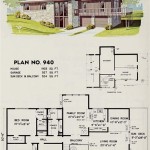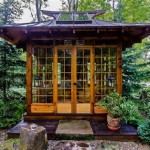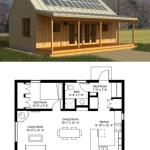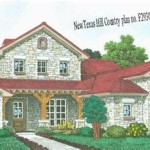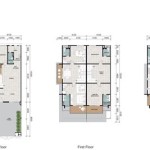Lighthouse Plans: A Comprehensive Guide to 5ft Scale Models
The allure of lighthouses transcends simple maritime necessity. These iconic structures have captured the imagination for centuries, serving as symbols of hope, guidance, and resilience against the relentless power of the sea. For hobbyists and model builders, the desire to recreate these architectural marvels in miniature is a natural extension of this fascination. Among the various scales available, a 5ft lighthouse model presents a compelling balance between detail and manageability. This article explores the considerations, challenges, and resources associated with undertaking a 5ft lighthouse model project, focusing on the importance of accurate and detailed lighthouse plans.
A 5ft scale allows for a significant level of detail, enabling the inclusion of features such as intricate lantern room glazing, realistic brickwork textures, and accurate representation of the internal structures. While not as demanding in terms of real estate as larger-scale models, a 5ft lighthouse still commands attention and serves as a prominent display piece. The size also facilitates easier access for internal lighting and potential automation, further enhancing the realism and functionality of the model.
The foundation of any successful lighthouse model, regardless of scale, is a comprehensive and accurate set of plans. Without detailed blueprints, the project is likely to suffer from inaccuracies, structural weaknesses, and ultimately, a less satisfying outcome. The quality of the plans directly impacts the realism, structural integrity, and overall aesthetic appeal of the finished model. Investing in well-researched and professionally drafted plans is therefore a critical first step.
Key Considerations Before Embarking on a 5ft Lighthouse Project
Before committing to a 5ft lighthouse model project, several important factors must be considered. These factors relate to resources, skill level, and space availability. A careful assessment of these aspects will significantly increase the chances of a successful completion.
Firstly, assess your skill level. Building a 5ft lighthouse model requires a range of skills, including woodworking, metalworking, basic electrical wiring (if incorporating lighting), and painting. Experience with these techniques is crucial, and novice model builders might consider starting with smaller, less complex projects to develop the necessary skills before tackling a larger lighthouse model. Practice with different materials and techniques will improve the final quality of the model.
Secondly, consider the available workspace. A 5ft lighthouse model is a substantial undertaking, requiring a dedicated workspace that can accommodate the model during construction, as well as provide ample room for tools, materials, and assembly. Ensure that the workspace is well-ventilated, properly lit, and equipped with the necessary tools for cutting, shaping, and joining the various components.
Thirdly, budget and time commitment are crucial factors. Building a 5ft lighthouse model can be a relatively expensive hobby, depending on the materials used and the level of detail incorporated. Accurately estimating the cost of materials, tools, and potential outsourcing of specific tasks is essential for effective budget management. Furthermore, the project will require a significant time commitment. A realistic timeline should be established to account for research, planning, construction, and finishing. Rushing the project will likely lead to errors and a less satisfying result.
Essential Elements of High-Quality Lighthouse Plans
The quality of the lighthouse plans is paramount for ensuring a successful build. A good set of plans should include several key elements, providing clear and detailed instructions for every stage of the construction process. These elements ensure the model accurately replicates the intended prototype.
Detailed elevation drawings showing the front, side, and rear views of the lighthouse are essential. These drawings should include precise measurements and dimensions for all structural components, including the tower, lantern room, gallery, and any adjacent buildings. Accurate elevation drawings provide a roadmap for the overall shape and proportions of the model.
Cross-sectional views are also critical for understanding the internal structure of the lighthouse. These views expose the layout of the interior spaces, including the location of stairs, landings, machinery, and any other internal features. Cross-sectional drawings are particularly important for accurately representing the internal arrangement and for planning the installation of any electrical components for lighting.
Detailed plans for specific components, such as the lantern room, lens assembly, and gallery railings, are crucial for achieving a high level of realism. These plans should include precise dimensions, material specifications, and assembly instructions for each individual component. Accurate and detailed component plans are essential for replicating the intricate details that make lighthouses so visually appealing.
Furthermore, a comprehensive parts list specifying the type, quantity, and dimensions of all materials required for the project is invaluable. This list simplifies the material acquisition process and ensures that all necessary components are readily available. A well-organized parts list minimizes delays and helps to maintain a consistent flow throughout the construction process.
Sourcing 5ft Lighthouse Plans: Options and Considerations
Several avenues exist for acquiring lighthouse plans suitable for a 5ft scale model. The best approach will depend on individual preferences, budget constraints, and the level of detail required.
Commercial plan providers offer a range of pre-designed lighthouse plans in various scales, including 5ft. These plans are typically professionally drafted and include detailed instructions, material lists, and component drawings. Purchasing commercially available plans offers the advantage of convenience and accuracy, as the plans have been meticulously researched and tested. However, the selection of lighthouse designs may be limited, and the cost can be relatively high.
Online resources, such as historical societies, maritime museums, and dedicated modeling forums, can be a valuable source of information and plans. Many institutions have digitized their archives, making historical drawings and photographs of lighthouses readily accessible online. These resources can be used to create custom plans or to supplement commercially available plans with additional details and historical accuracy. However, it is important to verify the accuracy and completeness of any plans obtained from online sources.
Custom-designed plans offer the greatest flexibility and control over the final model. Collaborating with a professional draftsman or architect allows for the creation of a unique lighthouse model based on specific requirements and preferences. This approach is particularly useful for replicating obscure or less-known lighthouses for which commercial plans are not available. While custom-designed plans can be expensive, they ensure a high level of accuracy and personalization.
Regardless of the source, it is essential to carefully review the plans before commencing construction. Verify that all dimensions are accurate, that the instructions are clear and understandable, and that the plans include all necessary details for building a structurally sound and visually appealing lighthouse model.
Material selection plays a crucial role in the overall appearance and durability of the model. Common materials used in lighthouse model construction include wood, plastic, metal, and resin. The choice of material will depend on the desired level of detail, the structural requirements of the model, and the available budget.
Wood is a popular choice for building the main structure of the lighthouse, as it is easy to work with and provides a realistic appearance. Commonly used wood species include basswood, balsa wood, and plywood. Basswood is particularly well-suited for intricate detail work, while plywood provides strength and stability for larger components.
Plastic is often used for creating smaller details, such as windows, doors, and railings. Plastic sheets and rods can be easily cut, shaped, and glued to create complex forms. Plastic also offers excellent resistance to moisture and weathering, making it a durable material for outdoor display models.
Metal, such as brass, copper, and aluminum, is frequently used for creating realistic details, such as lantern room glazing, handrails, and lightning rods. Metal provides a durable and visually appealing finish, adding a touch of authenticity to the model. Metalworking requires specialized tools and techniques, so it is important to have experience with metalworking before attempting to incorporate metal components into the model.
Resin is often used for casting complex shapes and details, such as decorative elements and architectural ornaments. Resin castings can be highly detailed and provide a durable and weather-resistant finish. Casting resin requires specialized equipment and techniques, so it is important to follow safety precautions and manufacturer's instructions carefully.
A 5ft lighthouse model project is undoubtedly a significant undertaking, but the creation of a detailed and accurate miniature lighthouse is a satisfying and rewarding experience. A meticulous approach to planning and material selection, and a dedication to accuracy, increases the chances of a positive conclusion.

How To Build An 5 Ft Lawn Lighthouse Made Of Treated Wood

Lighthouse Plan By U Build For The Garden Hobbies

How To Build A 5 Ft Painted Lighthouse For Your Yard

Woodworking Project Plan To Build A 5ft New England Lighthouse Plans Projects

How To Build An 5 Ft Lawn Lighthouse Made Of Treated Wood

Able Woodworking Plans For A 5 Ft Garden Lighthouse Ilrated With Photos

Able Lawn Lighthouse Plans Diy 4 To 7 Ft Tall

Able Woodworking Plans For A 5 Ft Garden Lighthouse Ilrated With Photos

Lawn Lighthouse Plans With Photos Build A 4 5 Or 6 Ft Lighthouses Diy Wood Woodworking Able

Able Lawn Lighthouse Plans Diy 4 To 7 Ft Tall

